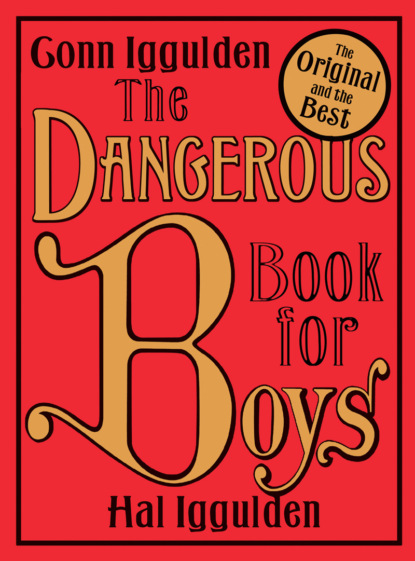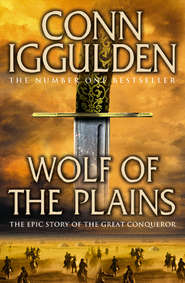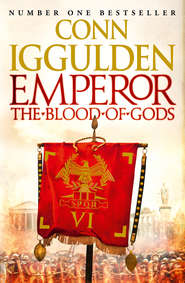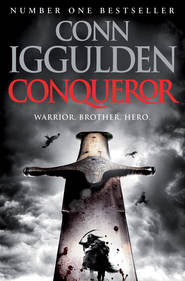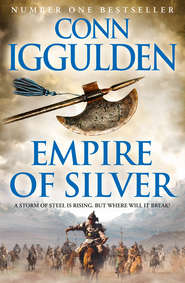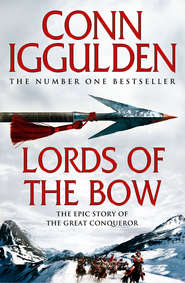По всем вопросам обращайтесь на: info@litportal.ru
(©) 2003-2024.
✖
The Dangerous Book for Boys
Настройки чтения
Размер шрифта
Высота строк
Поля
3. The Temple of Artemis (Diana) at Ephesus in what is modern-day Turkey is said to have awed Alexander the Great with its extraordinary beauty, though the citizens refused his offer to bear the cost of a restoration. Originally built in the sixth century BC, the temple was destroyed and rebuilt on more than one occasion, though the most famous was the night of Alexander’s birth, when a man named Herostratus burned it so that his name would be remembered – one of the greatest acts of vandalism of all time. It finally fell into ruin around the third century AD.
4. The Mausoleum at Halicarnassus was created for King Mausolus of Persia, who ruled from 377 to 353 BC. Halicarnassus is now the city of Bodrum in Turkey. On top of the rectangular tomb chamber, thirty-six columns supported a stepped pyramid crowned by statues of Mausolus and his wife (and sister) Artemisia in a chariot, reaching a height of approximately 140 ft or 42.5 m. It was destroyed in 1522 when crusading Knights of St John used the stone to build a castle that still stands today. The polished marble blocks of the tomb are visible in the walls. From Mausolus, we have the word ‘mausoleum’, meaning an ornate tomb.
5. The Statue of Zeus at Olympia is also lost to the modern world. Only images on coins and descriptions survive to tell us why the statue was considered so astonishing in the fifth century BC.
Olympia was the site of the ancient Olympic games – giving us the word. The site was sacred to Zeus, and Phidias of Athens was commissioned to carve the statue. The statue was of wood layered in gold for the cloth and ivory sheets for the flesh. In his right hand stood the winged figure of the goddess Victory (Nike), made of ivory and gold. In his left, he held a sceptre made of gold, with an eagle perched on the end.
The Roman emperor Caligula tried to transfer the statue to Rome in the first century AD, but the scaffolding collapsed under the weight and the attempt was abandoned. Later on, the statue was moved to Constantinople and remained there until it was destroyed by fire in the fifth century.
6. The Colossus of Rhodes in Greece is perhaps the most famous of the seven ancient wonders. It was a statue of Helios, over a hundred feet (30 m) high.
It did not actually stand across the harbour, but instead rested on a promontory, looking out over the Aegean Sea. The base was white marble and the statue was built slowly upwards, strengthened with iron and stone as the bronze pieces were added. It took twelve years and was finished around 280 BC, quickly becoming famous. An earthquake proved disastrous for the statue fifty years later. It broke at the knee and crashed to the earth to lie there for eight hundred years before invading Arabs sold it.
7. The Pharos Lighthouse at Alexandria was built by the architect Sostratus of Cnidus for the Greco-Egyptian king Ptolemy Philadelphus (285–247 BC).
Ptolemy’s ancestor had been one of Alexander the Great’s generals. His most famous descendant is Cleopatra who was the first of her Greek line actually to speak Egyptian. When Julius Caesar arrived in Alexandria, he would have passed by the great lighthouse on Pharos island. Its light was said to be visible for 35 miles (55 km) out to sea. Its exact height is unknown, but to have shed visible light to that distance, it must have been between 400 and 600 feet high (121–182 m).
It was so famous that, even today, the word for lighthouse in Spanish and Italian is ‘faro’. French also uses the same root, with ‘phare’.
As you can see, even the greatest wonders can be lost or broken by the passage of millennia. Perhaps the true wonder is the fact that we build them, reaching always for something greater than ourselves.
The Five Knots Every Boy Should Know (#ulink_afab603a-a32d-559e-9875-0161846e6b61)
BEING ABLE TO TIE KNOTS in rope is extremely useful. It is amazing how many people only know a reef and a granny knot. Rather than naming hundreds, we’ve narrowed it down to five extremely useful examples.
However, they take endless practice. I learned a bowline on a sailing ship in the Pacific. For three weeks, I used an old bit of rope on every watch, night and day. On my return to England, I attempted to demonstrate the knot – and found it had vanished from memory. To be fair, it didn’t take long to recall, but knots should be practised every now and then, so they will be there when you need them. There are hundreds of good books available, including expert levels of splicing and decorative knots. These are the standard basics – useful to all.
1. THE REEF KNOT
This knot is used to reef sails – that is, to reduce the amount of sail area when the wind is getting stronger. If you look at a dinghy sail, you’ll notice cords hanging from the material. As the sail is folded on the boom, the cords are tied together using reef knots. It is symmetrical and pleasing to the eye.
The rule to remember is: left over right, right over left.
2. THE FIGURE OF EIGHT
This is a “stopper’ – it goes at the end of a rope and prevents the rope passing through a hole. A double figure of eight is sometimes used to give the rope end weight for throwing. It’s called a figure of eight because it looks like the number eight.
3. THE BOWLINE (PRONOUNCED BOW-LIN)
This is a fantastically useful, solid knot. It is used whenever a loop on the end of a rope is needed – for a post, a ring, or anything else really.
1 Make a loop towards yourself, leaving enough free at the end to go around your post, tree or similar object
2 Now – imagine the loop is a rabbit hole and the tip is the rabbit. The other end of the rope is the tree. Feed the tip up through the hole – the rabbit coming up.
3 Pass the rabbit round the back of the tree.
4 Pass the rabbit back down the hole – back into the original loop.
5 Pull tight carefully.
NOTE: You can make a simple lasso by making a bowline and passing the other end of the rope through the loop. The bowline does not slip, so is useful for making a loop to lower someone, or to throw to a drowning person.
4. SHEET BEND
This is a useful knot for joining two ropes together. Reef knots fail completely when joining ropes of different diameters – but a sheet bend works very well.
5. A CLOVE HITCH – FOR HITCHING TWO THINGS TOGETHER VERY QUICKLY
This is a short-term knot – the sort of thing you see used by cowboys in westerns to hitch their horses. Its main benefit is that it’s very fast to make. Basically, it’s wrapping a rope around a post and tucking an end into a loop. Practise this one over and over until you can do it quickly.
These five knots will be useful in a huge variety of situations, from building a treehouse to camping, to sailing, to tying up your horse outside a saloon. They will not come easily. They take practice and patience. Knowing this will not impress girls, but it could save your life – or your horse.
Questions About the World – Part One: (#ulink_25a09592-9f0f-579d-bd57-a1b71726bd83)
1 Why is a summer day longer than a winter day?
2 Why is it hotter at the Equator?
3 What is a vacuum?
4 What is latitude and longitude?
5 How do you tell the age of a tree?
1. WHY IS A SUMMER DAY LONGER THAN A WINTER DAY? (#ulink_f118d70a-172a-5892-856f-0e3db29a9d7a)
In Australia, the shortest day is 21 June, and the longest falls on 21 December. In the northern hemisphere, 21 June is midsummer and midwinter falls on 21 December. Christmas in Australia is a time for barbecues on the beach.
Although the North Pole points approximately at the star Polaris, the Earth’s axis is tilted twenty-three and a half degrees in respect to the path it takes around our sun.
While the northern hemisphere leans towards the sun, more direct sunlight reaches us. We call this period summer. 21 June is the day when the North Pole points directly towards the sun, and the tilt is at maximum. The days are longest then as most of the northern hemisphere is exposed. Down in the south, the days are shortest as the Earth itself blocks light from reaching the shivering inhabitants.
As the Earth moves around the sun, the tilt remains the same. The autumnal equinox (22 or 23 Sept) is the day when day and night are of equal length – twelve hours each, just as they are on the vernal equinox in spring on 20 March. ‘Equinox’ comes from the Latin for ‘equal’ and ‘night’.
When the northern hemisphere leans away from the sun, less light reaches the surface. This is autumn for us, and eventually winter. Longer days come to the southern hemisphere as shorter days come to the north. The summer solstice of 21 June is also the moment when the sun is highest in the sky.
The Earth is actually closer to the sun in January rather than June. It’s not the distance – it’s the tilt.
The best way to demonstrate this is by holding one hand up as a fist and the other as a flat palm representing the Earth’s tilt. As your palm moves around the fist, you should see how the tilt creates the seasons and why they are reversed in the southern hemisphere. Be thankful that we have them. One long summer or one long winter would not support life.
At the midsummer and midwinter solstices, the conditions can become very peculiar indeed. The summer sun will not set for six months at the North and South Poles, but when it does set, it does not rise for another six. Northern countries such as Finland also experience the ‘midnight sun’ effect.
2. WHY IS IT HOTTER AT THE EQUATOR? (#ulink_588dc99a-e5ba-5f7a-80d9-8ca8bf5ef56f)
There are two reasons why the Equator is hotter than the rest of the planet. Strangely enough,the fact that it is physically closer to the sun than, say, the North Pole is not relevant. The main reason is that the Earth curves less in the equatorial region. The same amount of sunlight is spread over a smaller area. This can be clearly seen in the diagram below.
Also, the sun’s rays have to pass through less atmosphere to reach the equatorial band – and so retain more of their heat.





